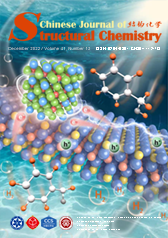
Cover Picture
Ultrathin ZnIn2S4 Nanosheets
Supported Metallic Ni3FeN for Photocatalytic Coupled Selective
Alcohol Oxidation and H2 Evolution
Mengqing Li, Weiliang Qi, Jiuyang Yu, Lijuan Shen, Xuhui Yang, Siqi Liu* and Min-Quan Yang*
Submit a Manuscript
Methods to Make Conductive Covalent Organic Frameworks for Electrocatalytic Applications
Mengyang Chen, Ye Zhou, Shi-Bin Ren* and Jiong Wang*
Chin. J. Struct. Chem. 2022, 41, 2212107-2212119 DOI: 10.14102/j.cnki.0254-5861.2022-0214
December 2, 2022
covalent organic frameworks (COFs), electrocatalyst, electrocatalytic reactions, engineering strategies, electrical conductivity
ABSTRACT
Covalent organic frameworks (COFs) represent a new class of crystalline organic polymer materials with the characteristics of high specific surface area, uniform pore distribution, high porosity, low density, devisable chain structures and good structural stability. These collective features play an important role in creating highly efficient electrocatalysts for energy conversion and fuel generation. Recent years have witnessed considerable advances in COF-based electrocatalysts for major electrocatalytic reactions such as oxygen reduction, oxygen evolution, hydrogen evolution, and reduction of carbon dioxide and nitrogen. However, it has been widely accepted that the poor electrical conductivity of most pristine COFs limits the further progress in electrocatalytic field. In this review, recent structural engineering strategies are summarized toward improving the electrical conductivity of COFs for achieving high performance. The researches of conductive COFs and their derivatives are described in detail. The structure-activity relationship between molecular structures of COFs and their electrocatalytic performance is emphasized. Lastly, current challenges and future perspectives on fabricating COFs as promising electrocatalysts are discussed. The purpose of this review is to provide guidelines for the preparation of highly efficient COF-based electrocatalytic materials with a view to replacing the commercially available noble metal-based electrocatalysts.






